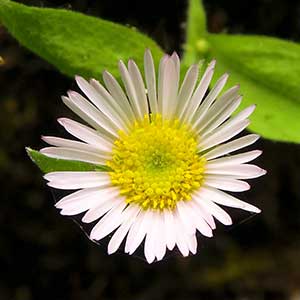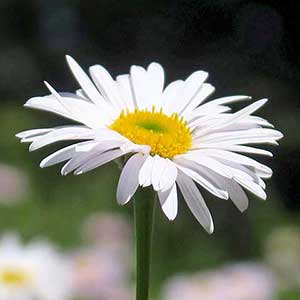Erigeron oreganus
Erigeron aliceae
Gorge daisy, gorge fleabane, Oregon fleabane
Alice Eastwood's fleabane
decumbent to erect; hirsute with unequal hairs, sparsely glandular.
erect, nearly glabrous or sparsely strigose often becoming more so distally, eglandular.
persistent, obovate, 15–90 × 5–20 mm;
margins coarsely serrate to shallowly lobulate;
surfaces sparsely to moderately hirsute to strigose.
usually persistent, lanceolate to oblanceolate, 50–120 × 10–30 mm;
margins entire, sometimes coarsely toothed with 1–5 pairs of teeth;
midveins prominent, rarely with 2 prominent veins;
surfaces remotely to moderately strigose.
obovate to elliptic; little or not reduced distally;
surfaces sparsely to moderately hirsute.
well developed, lanceolate to narrowly elliptic, 10–80 × 3–14 mm, distally reduced, bases clasping.
4–7 × 9–15 mm.
5–7 × 13–17 mm.
30–60, pink to purple;
rays 4–5 × 0.5–1 mm.
30–80, white to lavender to purple;
rays 4–12 × 1–1.5 mm.
corollas 3–5 mm.
corollas 2–4 mm.
in 2–3 series, pale green with dark green medial stripe;
surfaces remotely hirsute, strongly stipitate-glandular.
in 2–3 series, with dark green medial area;
surfaces white woolly-villous, glandular.
2–3 mm, moderately strigose;
inner pappi of several unbarbed to weakly barbellate twisted bristles.
2–3 mm, moderately to densely strigose;
inner pappi of numerous barbellate bristles.
1–4, radiate.
1–few, radiate.
Erigeron oreganus
Erigeron aliceae
Shady cliffs, rocky slopes, crevices. Flowering May–Aug. 100–400 m. Casc. WA. Native.
This uncommon species is found only in the Columbia River Gorge.
Meadows, ridges, prairies. Flowering Jun–Sep. 400–2200 m. Casc, CR, ECas, Sisk. CA, WA. Native.
This is a variable species that can be confused with Erigeron glacialis. The woolly-villous phyllaries best distinguish E. aliceae from E. glacialis.
James Riser, Stephen Meyers
James Riser, Stephen Meyers





